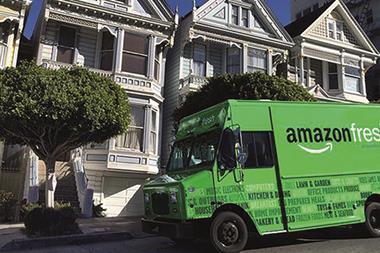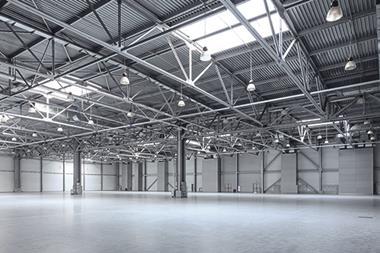Both before and after June’s EU referendum, we were anticipating a real slowdown in occupational demand. The reality, however, was surprisingly different and what we’re actually seeing is demand for industrial and warehouse product continuing to significantly rise.

Simultaneously, stock levels are dwindling as the institutional sector’s appetite to fund speculative development dries up. As business space agents operating in markets in the London and South East regions, we are currently facing a big issue: how do we satisfy this pent up demand when stock levels in the market continue to dwindle?
Examining market analysis we conducted in Q1 and Q3 of this year, it’s clear that demand for industrial floor space has risen to 15.3 m sq ft, with requirements for buildings of 25,000 sq ft and upwards accounting for 80% of this total.
Rise of technology
The rise of the e-tail and home delivery sectors is stimulating this rise, with demand in the inner and Greater London regions squarely sitting between the 25,000 sq ft and 80,000 sq ft brackets.
Looking at the data we’ve collected on the smaller end of the market, demand here has, unsurprisingly, remained steady but hasn’t soared – many smaller requirements don’t make it onto agents’ registers.
It’s not all about size, though. We also need to look at tenure. Recently, most new product being delivered to the market has been leasehold; freeholds are very scarce in supply across all size ranges, despite the premium values occupiers would be willing to pay as a consequence of current low interest rates. At present, very few developers are fully capitalising on this real opportunity.

Drilling down into supply, our research suggests that total availability of new stock stands at approximately 8m sq ft across the our regions, with around 26% of this being grade-A space. But with demand exceeding 15m sq ft, the mismatch has driven up rental values in most locations, with some hotspots in our regions seeing prime rents grow by as much as 50% over the past three years.
The rental growth story is therefore very compelling at present, especially in the second-hand market. While prime rents continue to hold strong, it’s the secondary rents that have really jumped up at pace – in some cases annualised rental growth has risen by over 20%.
In the first three quarters of 2016, investors in our regions continued to favour industrial property, with £422m of transactions completed so far this year. The obvious and most significant being L&G’s forward purchase of the 2.2m sq ft Amazon building at London Distribution Park, Tilbury, reflecting a net initial yield of 5.25%.
Almost two thirds of our locations in London and the South East have experienced double-digit annualised growth over the past three years, and with new schemes likely to be met with strong demand from both occupiers and investors alike, the trend seems set to continue.
John Bell, partner of Glenny LLP and head of business space and investment agency
This analysis is based on content from Glenny’s Q3 2016 Databook which offers in-depth market insights into the East London and Essex, North London and Hertfordshire, and South East London and Kent regions - look out for our breakdown and full data tables exclusively on Property Week next Monday































No comments yet